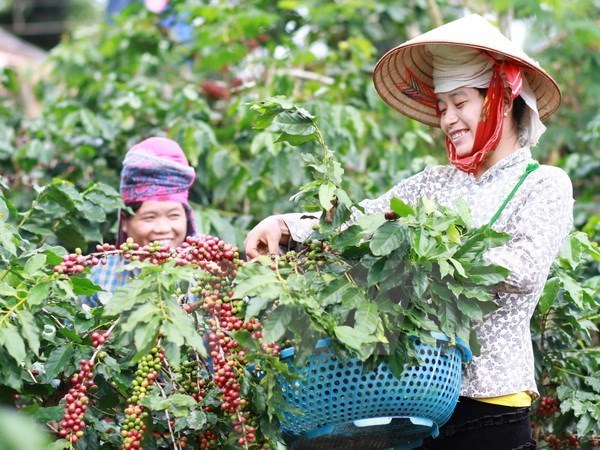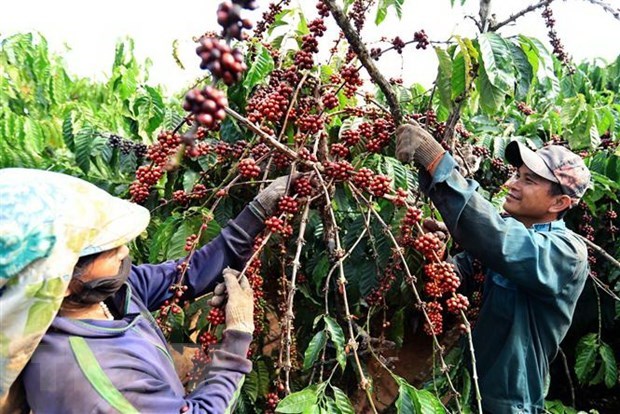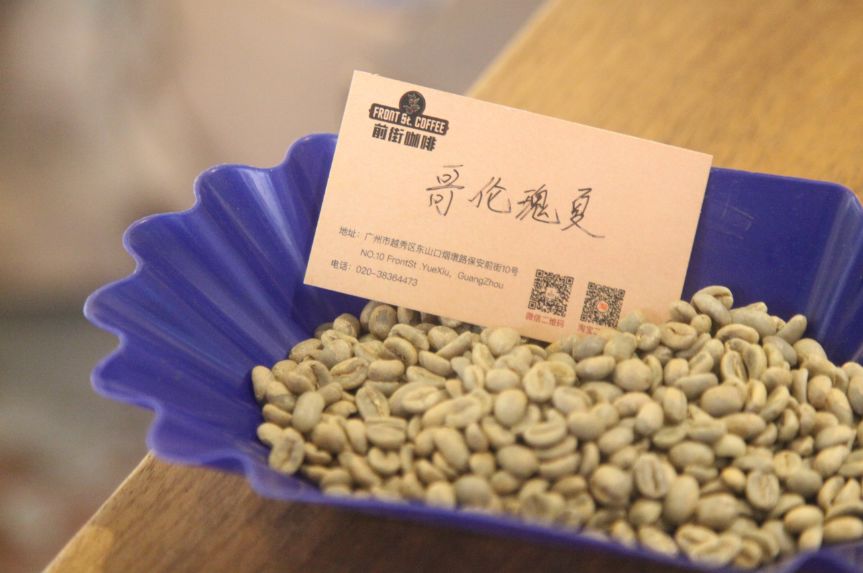The present situation of coffee industry in Vietnam: the output of coffee in Vietnam is high but the price is low, which is due to the quality.
Professional coffee knowledge exchange more coffee bean information please follow the coffee workshop (Wechat official account cafe_style)
Vietnam is the second largest coffee producer in the world, but the value of coffee is not high.
According to the information reported by the Vietnam News Agency, Vietnam exports 1.5 million tons of coffee every year, but the coffee exported is mainly coffee beans, accounting for 90%, and there are few coffee products with high added value. In the export product structure, deep-processed products account for only 7%. The rest are coffee beans. As a result, the profit recovered is not as good as that of exports. This is a weakness of the coffee industry in Viet Nam and the Vietnamese agricultural and rural development sector is working to address this weakness in order to improve the quality and added value of Vietnamese coffee.

At present, Vietnamese coffee has been exported to 80 countries and regions in the world, earning 3 billion US dollars in foreign exchange, accounting for 14 percent of the global coffee export market share and 10.4 percent of coffee bean exports, respectively, ranking second after Brazil. The top 10 export markets for Vietnamese coffee are Germany, the United States, Italy, Spain, Japan, Belgium, Russia, Algeria, the Philippines and China, accounting for 80% of the country's coffee exports.
Although coffee ranks among Vietnam's highest exports of agricultural products, coffee exports grew at an average annual rate of only 6.57 per cent in 2013-2017. The main reason is that it is affected by the turmoil in the world coffee market. A person from the Ministry of Agriculture and Rural Development of Vietnam said that at present, there is a lack of professionalism in the management of coffee processing, operation and export enterprises in Vietnam, and the foreign language proficiency and international trade skills of coffee sales and export staff in Vietnamese enterprises are relatively low.

Lack of deep processing and branding is the main reason for the slow development of coffee in Vietnam.
At present, there are 150 coffee export enterprises and 3000 coffee purchasing agents in Vietnam, including 13 foreign-funded enterprises, of which 1/3 have coffee bean processing for service exports; 90% domestic enterprises and 100% foreign-funded enterprises can only purchase coffee beans through hawkers and purchasing agents.
In order to improve the added value of Vietnamese coffee, the Ministry of Agriculture and Rural Development of Vietnam is carrying out a national product development proposal for "Vietnamese quality coffee", which will be implemented in 2018-2023, with a long-term vision to 2030. The proposal will assist at least 10 enterprises to improve the wet processing process of coffee, improve quality and reduce post-harvest losses. The proposal also proposes that at least 10 enterprises should participate in the production and deep processing of high-quality coffee products to ensure the added value of the coffee industry in 2020-2030; 50% of first-class enterprises have Vietnamese high-quality coffee brands printed on the packaging of their products when they trade in domestic and foreign markets.
Vietnam's Ministry of Agriculture and Rural Development said it chose large enterprises and groups with strong financial and scientific and technological capabilities to guide the value chain. The sector also encourages aid enterprises to invest in advanced and modern processing industries, deep processing and the creation of high value.
With regard to markets, it is necessary to maintain traditional export markets, open up potential markets and niche markets, and pay special attention to the markets of member countries such as China, the European Union, CPTPP and AEC.
The agricultural sector has put forward plans to process more than 80 per cent of coffee beans on an industrial scale by 2030, with an average annual processing capacity of 150000 tons of instant coffee and 30-40 per cent of deeply processed and branded products.

Lack of quality standard certification makes it difficult to improve quality.
The annual total value of the global coffee consumption market is about 500 billion US dollars, but Vietnam's coffee exports reach only 3.4 billion US dollars, which means its market share is on the low side. It is worth mentioning that the flavor of Vietnamese coffee is no less than that of Indonesia or Thailand, so the top priority for the coffee industry is to effectively usher in the opportunities and challenges, and make efforts to increase the global market share of Vietnamese coffee.
Experts believe that the biggest challenge facing Vietnamese coffee and even agricultural products is the lack of products that meet international standards such as global good agricultural practices in terms of exports. At present, every province and city in Vietnam has put forward coffee quality management projects, but most coffee products have not yet been certified by international organizations. The biggest problem for the Vietnamese coffee industry is to readjust its strategy from production to sales.
Vietnam is the second largest producer of robusta coffee in the world, but the value of coffee is not high. In order to improve the quality of coffee, Vietnam hopes to formulate more stringent quality standards, vigorously apply science and technology, and increase the promotion of specialty coffee in domestic and foreign markets.
END
Important Notice :
前街咖啡 FrontStreet Coffee has moved to new addredd:
FrontStreet Coffee Address: 315,Donghua East Road,GuangZhou
Tel:020 38364473
- Prev

Kenyan Coffee Flavor describes how good Kenyan Coffee tastes? Kenyan Coffee hands make steps
Professional coffee knowledge exchange more coffee bean information please follow the coffee workshop (Wechat official account cafe_style) everyone wants to drink good coffee, sweet and palatable, with explosive aroma and long finish, and hope to drink this kind of coffee every time. However, there are many factors that affect the taste of coffee: time, temperature, brewing equipment, etc., but the most important
- Next

Special report on roasting and brewing of washed Rosa Coffee at San Pedro Manor in Tolima, Colombia
Professional coffee knowledge exchange more coffee bean information please follow Coffee Workshop (Wechat official account cafe_style) Colombia Tolima Finca San pedro Chateau San Pedro, Colombia: Columbia production area: Tolima altitude: 1860m treatment: washing Grade: SUPREMO Variety: rose 01 | production area introduction to Columbia
Related
- Detailed explanation of Jadeite planting Land in Panamanian Jadeite Manor introduction to the grading system of Jadeite competitive bidding, Red bid, Green bid and Rose Summer
- Story of Coffee planting in Brenka region of Costa Rica Stonehenge Manor anaerobic heavy honey treatment of flavor mouth
- What's on the barrel of Blue Mountain Coffee beans?
- Can American coffee also pull flowers? How to use hot American style to pull out a good-looking pattern?
- Can you make a cold extract with coffee beans? What is the right proportion for cold-extracted coffee formula?
- Indonesian PWN Gold Mandrine Coffee Origin Features Flavor How to Chong? Mandolin coffee is American.
- A brief introduction to the flavor characteristics of Brazilian yellow bourbon coffee beans
- What is the effect of different water quality on the flavor of cold-extracted coffee? What kind of water is best for brewing coffee?
- Why do you think of Rose Summer whenever you mention Panamanian coffee?
- Introduction to the characteristics of authentic blue mountain coffee bean producing areas? What is the CIB Coffee Authority in Jamaica?

